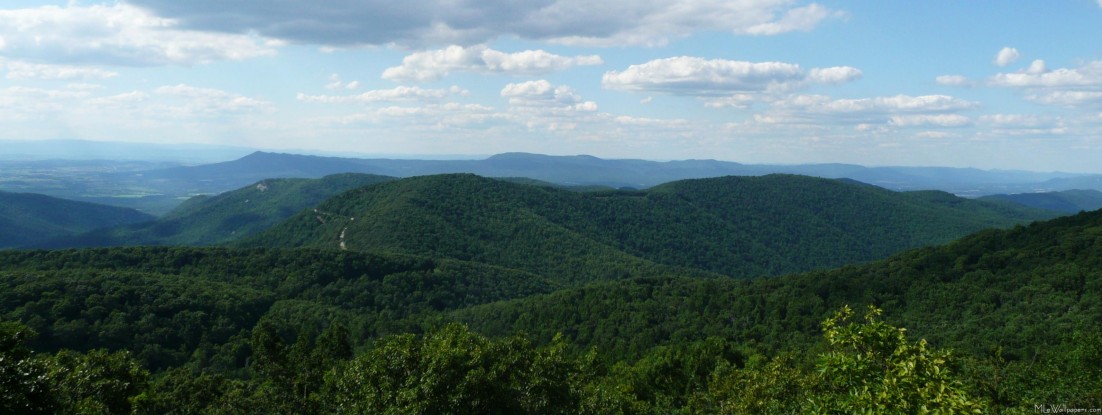On our way home from spending Thanksgiving in WV, we stopped in Shepherdstown, WV for a night. Shepherdstown is a great little town near the WV/VA border and sits right on the banks of the Potomac. It’s home to Shepherd University and a quaint little downtown with tons of independent restaurants, coffee shops, and specialty stores. We’ve started breaking the 12 hour trip to Welch into two nights and Shepherdstown has become one of the spots we like to stop when heading home. If you have never visited, you should. If you do, plan to stop off at Antietam National Park for a history lesson about the bloodiest battle of the U. S. Civil War.
The point of this post is not a travel log, but to encourage folks to read a book I picked up at Four Seasons Bookstore, a little independent bookstore in Shepherdstown. They have a nice selection of titles related to WV history including The Devil is Here in These Hills, a book that I have passed up several times at the Appalachian Studies Association meeting. The cover has always piqued by interest as it shows a mix of black and white miners posing for a group photo with the black miners outnumbering the white miners. With its cover, this book is already challenging the common stereotype that Appalachians are white. After years of picking up this title and putting it down, I decided it was time to read James Green’s book about the “devil” in these hills.
The author is a labor historian and professor emeritus at the University of Massachusetts, Boston. The Devil is Here in These Hills is a detailed, chronological account of the wars that were fought to unionize miners in the coalfields of Central Appalachia. For a kid who grew up in Welch, the county seat of McDowell, I wonder why I didn’t learn more about this rich history in my eighth grade West Virginia history class. How did I not know that McDowell County was the most difficult place in WV for the union organizers to make inroads? Or, having grown up walking up the steps of the famous courthouse where “Two Gun” Sid Hatfield and Ed Chambers were gunned down by Baldwin-Felts detectives not knowing the circumstances of the killings. Heck, I grew up thinking that the detectives were actual lawmen and not hired assassins. Or that this same company, the Baldwin-Felts Detective Agency located in Bluefield also provided the local coal operators with the armed guards or “gun thugs” that patrolled the coal camps, intimidated miners and their families, and deprived them of their most basic constitutional rights and freedoms.
I grew up like everyone else in my part of Appalachia, with a strong distrust of outsiders that write about our little, forgotten corner of the world. Many journalists focus solely on the poverty without taking the time to understand the reasons for it. They completely miss the complexity of the region and its people and how the extreme poverty in the region can be directly traced to the devil in these hills, “… and the devil is greed.” How else can one explain such poverty centered in a region so rich in natural resources?
The author of The Devil is Here in These Hills is not a journalist, but a historian. And his book is not a splashy column for a newspaper, but a monograph that gives a detailed account of the circumstances and events that led to the mine wars.
Historical details aside, James Green gets it. He knows that not many who have told this story have represented the region and the characters in this history correctly. The author recognizes the value of the lives of the people in this region, the valiant ways in which they fought for justice and fair treatment, and the respect that their bravery and actions should afford them. It is a constant theme throughout the book, that the economic despair that many of the miners found themselves in was not of their own making. Instead, it was a result of greed and the unscrupulous ways in which the wealthy and heavily resourced coal operators, often supported by elected state and federal government officials, forced compliance and extracted labor from the miners by constantly threatening their lives and livelihoods.
I don’t know many folks from back home that do not have an immediate family member that has not worked in the mines. For all of us, the incredible history surrounding the mine wars and the unionization of the miners should be a source of pride and a constant reminder of the necessary protections that labor unions like the United Mine Workers of America provide workers. Miners in the Tug River Valley fought like hell for the bargaining power that a labor union can provide and it would do us all good to remember this history today. As our current lawmakers get a little too cozy with the coal, gas, and timber companies, it is just as important today that people have the ability to fight back whether through labor unions or strong grassroots organizations.
If you happen to be one of the few people who might read this, chances are you are from “my neck of the woods.” In that case, you will do your hillbilly soul some good by reading The Devil is Here in These Hills.
(Final Note: The author mentions in his acknowledgments having spent some time with a number of historians from the region. Folks like Lou Martin at Chatham University and Ken Fones-Wolf at WVU, scholars I’ve had the pleasure to meet and get to know thanks to another PhD historian, native of Welch, and friend, Mark Myers. I am certain that their input strengthened the author’s efforts to accurately portray the region and its people.)
